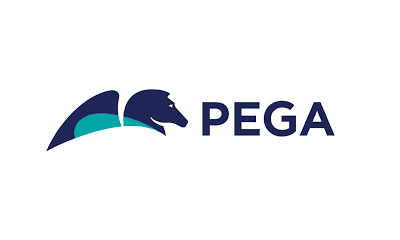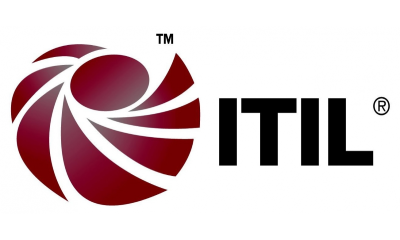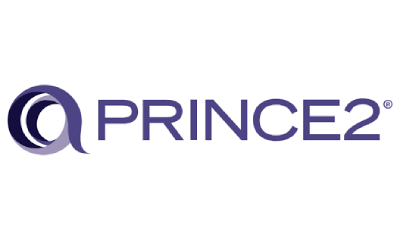Additional Info
What Is Retail Banking?
Retail banking, often known as consumer banking or personal banking, is a type of banking that focuses on individuals rather than enterprises. Individual consumers can engage in retail banking to manage their money, get credit, and make secure deposits. Retail banks provide services such as checking and savings accounts, mortgages, personal loans, and credit cards.
We can build personalization by using data analytics to provide the right product to the right person at the right time on the right device. Data mining is commonly used to find potential clients for a new product's target audience.
Through a study of literature and evidence on foreign direct investment in banking, we analyze the viability of a bank's strategy of entering retail banking globally, wherever regulations permit. We look at the role of regulation, the costs of operating at a distance and in an unfamiliar environment, and the advantages of offsetting elements that international banks may have over domestic banks.
Retail banking explains the various retail strategies:
Maintaining a savings or current account, credit cards, debit cards, housing loans, ATM services, online banking, mobile banking, automotive loans, education loans, investment, mortgages, insurance, and stockbroking are just a few of the services provided by retail banks.
Top 5 Retail Banking Strategies
Product Innovation:
Customers' demographic and financial information is stored in the bank's database. This information assists banks in developing unique personalized solutions for a variety of groups and types of clients from diverse geographies. Consistent product innovation to fulfill client needs is advantageous. Mutual funds and insurance are some of the sectors where banks are providing new and customized products.
Quality of Service
The majority of retail banks provide similar services. If a customer discovers that another bank offers the same services at a lesser cost and with higher quality, they will readily switch. As a result, the client's experience and the bank's services are most important. Banks must develop tailored, low-cost products that satisfy and keep clients while also allowing them to make a profit.
Detailed Market Research:
Through rigorous market research, banks can discover undiscovered markets. They can be the first to market with products and services that others have yet to implement. This provides them with leverage and competitive advantage.
Multiple Delivery and Contact Channels
Customers prefer to communicate with their banks through a variety of channels. As a result, banks should offer high-quality customer care channels such as mobile banking, internet banking, web chat services, and telephone banking, among others.
Understanding Customer Sentiment through Cross-channel Analysis
Through sentiment research, banks may learn what their customers think about their brand and services. It gives them information to help them plan for the next modifications they'll need to keep up with altering trends. Real-time client dialogues are displayed on social media sites such as Twitter, Facebook, Instagram, Reddit, and others. Those banks can get a clear view of their expenses by examining them.
Banks can determine what their consumers think about their brand and services by doing sentiment research. It provides them with information to assist them in planning for the next changes they'll need to make to keep up with changing trends. Social media sites such as Twitter, Facebook, Instagram, Reddit, and others display real-time client interactions. By examining their expenses, those banks can acquire a clear picture of their costs.
Types of Retail Banks
Local community banks, which are small, locally controlled banks, to the retail banking services of huge, worldwide corporate banks like JPMorgan Chase and Citibank, retail banks exist in several sorts and sizes.
JPMorgan
Bank of America
Wells Fargo
Citibank
U.S. Bank2
Retail banking services account for a major amount of all of these banks' income. Credit unions are non-profit cooperatives where members combine their assets to provide loans and other financial services to other members. Because they are not corporations, credit unions often provide greater interest rates to their members.
Retail banking divisions are found in the majority of America's largest banks. Bank of America, JP Morgan Chase, Wells Fargo, and Citigroup are among them. Retail banking accounts for 50 percent to 75 percent of the overall revenue of these institutions.
There are also numerous smaller community banks. They place a premium on cultivating relationships with residents in their respective towns, cities, and regions. Their entire assets are less than $10 billion. Another sort of retail bank is a credit union. They may limit services to a company or school workers. They are non-profit organizations. Because they aren't as concerned with profits as the larger banks, they may be able to offer better terms to depositors and borrowers.
Retail banks that specialize in mortgages are known as savings and loans. Since the savings and loans crisis, they've all but vanished.
Purpose of Retail Banking
Retail banking's purpose is to assist individual customers in managing their finances, obtaining credit, and securely depositing their funds. Checking and savings accounts, mortgages, personal loans, credit cards, and certificates of deposit are all available through retail banks (CDs).
Retail banks include the U.S. Bank and Bank of America.
Individual consumers, rather than large institutions, receive financial services via retail banking.
Savings and bank accounts, mortgages, personal loans, debit and credit cards, and certificates of deposit are among the services provided (CDs).
Local community banks and divisions of large commercial banks are examples of retail banks.
Many fintech organizations can now provide all of the same services as retail banks via Internet platforms and smartphone apps, thanks to the digital revolution.
While retail banking services are available to anybody, corporate banking services are provided only to small and big businesses and corporations.
Job in Retail Banking
Customer advisor:
A customer advisor is the person who deals directly with customers and oversees the growth of a customer portfolio with the bank. Customer advisors have many opportunities, and they can work as wealth management managers, general management managers, or business development managers.
Online account manager:
An online account manager is similar to a bank manager, who is responsible for bank services such as clients, prospects, and product and service advice, among other things. The main distinction between an online account manager and a bank manager is that an online account manager will only provide these services via phone and online. As digital money becomes more prevalent, this profession has a lot of potential.
Account manager :
Account managers, also known as commercial account managers, assist local governments and organizations in expanding their activities with the major bank.
Welcome agent: Customers are generally greeted by a welcome agent who assists them in satisfying their day-to-day needs and doing simple banking activities.
Branch manager:
The major responsibility of a branch manager is to supervise commercial relationships with customers and to find new ones. He will also be in charge of the bank's cash flow as well as the adjustments with other similar or different banks. He's also in charge of regional market analysis, sales strategy, and implementation, among other things.
Features of Retail Banking
Small Ticket Size Transactions
The first and most distinguishing characteristic of retail banking is the modest ticket size of transactions. As a result, in the case of loans to retail customers, the loan ticket size will range from $1,000 to $100,000 or more, depending on the policy and location of the bank, and in the case of fixed deposits, the average deposit transaction size will range from $100 to $100,000.
Diversification
In terms of bank risk, in the case of retail banking, if a bank has given one large corporate loan of $500000 and the borrower defaults due to some problem, the bank is at risk of losing all of the money, but if the same bank has given $5000 loans to 100 different retail customers and 5 or 10 borrowers default, the bank will be able to absorb the losses.
Variety of Services
Customers come to retail banks to fulfill multiple needs, not just one, so in investment banking, the bank must only provide investment-related banking to its customers, whereas in retail banking, the bank must provide all services, such as opening savings and current accounts, providing debit and credit cards to customers, offering housing loans, and car loans.
Highly Competitive
Another feature of retail banking is that it is very competitive due to a large number of companies in the market, as well as the fact that clients are price and service-sensitive. Customers will switch to the bank that offers a greater rate of interest on fixed deposits, for example, if one bank offers 5% interest on fixed deposits and another bank offers a 5.50 percent interest rate.
Higher Administrative Cost
Because a bank must pay different operating expenditures for branch maintenance, such as rent for the branch premises, salary to branch staff, electricity expenses, and so on, a larger administrative cost for the bank is incurred, which is not the case with an investment bank or wholesale bank.
Popular services covered under Retail Banking
Automated Teller Machines (ATM)
Credit Cards.
Debit Cards.
Electronic Funds Transfer (EFT) System.
Mobile Banking.
Internet Banking.
Tele-banking.
Home banking.
Industry Trends in Retail Banks:
Digital Transformation:
Amplifying digital innovation to improve user experience and manage internal procedures is an important trend that the Indian retail business must adopt. For both banks and consumers, digitized product design and distribution will offer up a whole new universe of possibilities. To name a few benefits, there is a better user experience, increased profitability, improved process efficiency, and speedier processing.
AI-Enabled Personalization:
Banks will pay close attention to AI and Machine Learning technologies in the coming year in order to drive predictive personalization as an integral aspect of improved financial marketing. Advanced analytics and data will assist the retail banking business target the proper customers for their products and promotions, resulting in increased sales in both volume and value.
Cybersecurity and Data Privacy:
While retail banking sectors are busy investing in digital tools, they are also putting themselves in an exceedingly responsible yet necessary position, namely, ensuring the privacy and security of their client's data. Customers are becoming less tolerant of such missteps as security breaches and fraudulent purchases continue to make headlines.
Cloud Computing:
Banks initially shunned cloud computing in favor of in-house IT infrastructure due to security and availability concerns. The new-age banking issues, on the other hand, have prompted banks to place a greater emphasis on cloud computing. It can assist banks in streamlining operations, increasing operational efficiency, and developing scalable models that cut time to market and provide greater customer service, among other things.
Banking-as-a-Service (BaaS):
With changing client expectations, retail banking in India is about to undergo a substantial transformation in the shape of BaaS, in which banks collaborate with airlines, e-commerce, hospitals, logistics companies, and fintech firms to deliver financial services. Banks may monetize their data and infrastructure while also expanding their market reach thanks to this trend.































